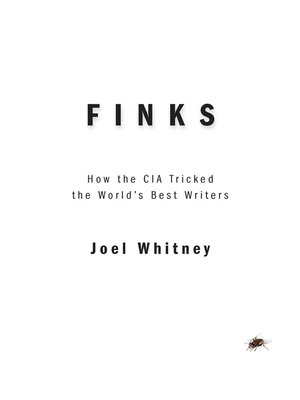
Sign up to save your library
With an OverDrive account, you can save your favorite libraries for at-a-glance information about availability. Find out more about OverDrive accounts.
Find this title in Libby, the library reading app by OverDrive.



Search for a digital library with this title
Title found at these libraries:
| Library Name | Distance |
|---|---|
| Loading... |
When news broke that the CIA had colluded with literary magazines to produce cultural propaganda throughout the Cold War, a debate began that has never been resolved. The story continues to unfold, with the reputations of some of America's best-loved literary figures—including Peter Matthiessen, George Plimpton, and Richard Wright—tarnished as their work for the intelligence agency has come to light.
Finks is a tale of two CIAs, and how they blurred the line between propaganda and literature. One CIA created literary magazines that promoted American and European writers and cultural freedom, while the other toppled governments, using assassination and censorship as political tools. Defenders of the “cultural" CIA argue that it should have been lauded for boosting interest in the arts and freedom of thought, but the two CIAs had the same undercover goals, and shared many of the same methods: deception, subterfuge and intimidation.
Finks demonstrates how the good-versus-bad CIA is a false divide, and that the cultural Cold Warriors again and again used anti-Communism as a lever to spy relentlessly on leftists, and indeed writers of all political inclinations, and thereby pushed U.S. democracy a little closer to the Soviet model of the surveillance state.
Finks is a tale of two CIAs, and how they blurred the line between propaganda and literature. One CIA created literary magazines that promoted American and European writers and cultural freedom, while the other toppled governments, using assassination and censorship as political tools. Defenders of the “cultural" CIA argue that it should have been lauded for boosting interest in the arts and freedom of thought, but the two CIAs had the same undercover goals, and shared many of the same methods: deception, subterfuge and intimidation.
Finks demonstrates how the good-versus-bad CIA is a false divide, and that the cultural Cold Warriors again and again used anti-Communism as a lever to spy relentlessly on leftists, and indeed writers of all political inclinations, and thereby pushed U.S. democracy a little closer to the Soviet model of the surveillance state.







